Does west coast drought affect east coast life? You bet.
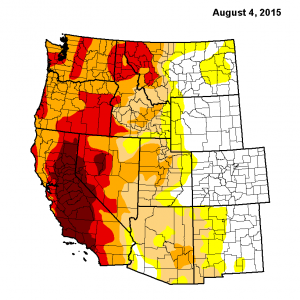
Drought. Every day, there are multiple news stories about the historic drought affecting America’s west and south. In April, Governor Jerry Brown mandated that Californians cut their water usage by 25%. Almond growers are being lambasted for growing a thirsty crop, golf courses are allowing their greens to turn into browns, and aquifers are being depleted at a rate far greater than they are being replenished. The outlook is bleak. Seven states are literally running out of water, and scientists are scrambling to try to address the unprecedented drought.
Yet in the midst of all of this, New Englanders are rather lackadaisical. After all, Lowell, Massachusetts just experienced the snowiest winter on record with an unprecedented 120.6 inches, earning the city the title of “snowiest city in the United States” for the 2014-2015 winter, and the summer has been fairly mild. On August 6, the USGS drought monitor showed a couple of areas of mild drought, but New Englanders have come to expect regular, soaking rains, and nobody seems too concerned. After all, New England isn’t affected by the exceptional drought of the west coast. Or is it?
Extreme Weather on Both Coasts

Sir Isaac Newton’s Third Law states that for every action, there is an equal and opposite reaction; and while the law refers to motion, it can also be applied to weather. The severe drought and high heat of the west is directly related to the cold and snow in the northeast, and both extremes have been attrributed to global climate change. In the period of January to March of 2015, New England experienced its coldest winter on record. Providence, RI, Worcester, MA, and Hartford, CT broke all cold records during that time, while Boston, MA experienced its third coldest winter on record, with its top two coldest periods dating all the way back to the 1800s. On the opposite coast, Sacramento, CA experienced its hottest March on record, with temperatures rising to those that are more typical to May than March. Weather balances the atmosphere, so when an extreme takes place in one geographic location, the opposite extreme will occur somewhere else in the world.
“Ridiculously Resilient Ridge”
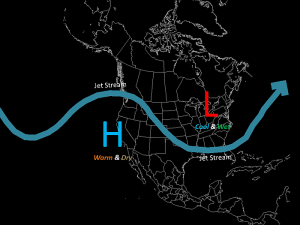
Stanford University Ph.D. candidate Daniel Swain, who writes The California Weather Blog, coined the alliterative nickname for the high-pressure area that sits over the eastern Pacific Ocean for months at a time. And, like the Ridiculously Resilient Ridge itself, the name has stuck. The ridge is basically a mountain of air that stalled off the coast of California and British Columbia, causing any storms that would typically hit California to trend farther north instead to the Alaskan panhandle and northward. The trough, just as alliteratively coined the “Terribly Tenacious Trough” by Jennifer Francis, Research Professor at Rutgers University, in turn sat over the east coast, bringing with it unusually cold, wet weather. This weather pattern, which would be typical if it lasted just a short period of time, has been extreme in that it has been incredibly persistent, developing for months at a time since 2012. In addition, climatologists are scratching their heads over it, as there is no clear reason why it has been so persistant.
Economic Impact
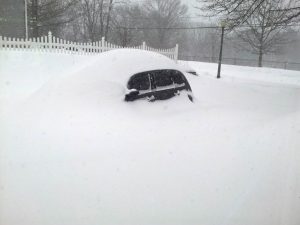
New Englanders took a significant economic hit during the extreme winter of 2014-2015 due to exhausted snow removal budgets, damaged property, and high utility and heating bills. Ice dams and roof issues from the excessive amount of snow caused damage to many homes, and insurance companies are still reeling from the claims processed over the winter, which also included higher than average vehicle and accident claims. Many accidents were attributed to the severe winter and snowfall, and to the gargantuan snow piles that made driving and maneuvering in parking lots even more treacherous. And even more problems ensued when the snow began to melt in the spring.
Flooding
Flooding is not just caused by extreme rainfall but is in fact influenced by many factors, such as soil conditions and sea level. In the northeast, excessive precipitation, like the record snowfall experienced this past winter, increases soil moisture content, which in turn increases the potential for flooding. In addition, northeast sea levels have risen over a foot since last century, which already puts New Englanders at increased risk for flooding.
Food Supplies
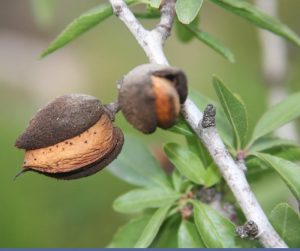
California grows more food for consumption in the United States than any other state. In fact, nearly half of all the fruits, vegetables, and nuts grown in the entire country are grown in California, and the state is the fifth largest supplier of food in the world. Growing over 450 different crops, California is the exclusive U.S. producer of many crops including almonds, artichokes, clover, dates, olives, pistachios, and raisins. In addition, California also produces almost all of the grapes, lemons, lettuce, and tomatoes grown in the nation.
Prices of these crops have already risen, and are expected to rise even more. 80% of the water used in California is used by farmers and ranchers, and with the exceptional drought, many farmers have had to leave their fields fallow or pay to pump water from the ground. The economic hits to farmers are passed onto consumers, resulting in higher priced produce and nuts for the rest of the nation. If the drought continues, California farmers may be forced out of business, resulting in national food shortages. And over on the opposite coast, Florida experienced freezing temperatures that affected the 2014-2015 orange crop, resulting in the smallest yield of oranges since the 1964-1965 season.
Looking Ahead
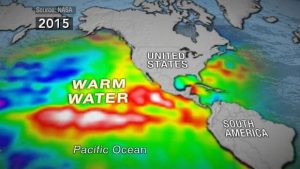
At this time, forecasters are hoping that the extreme drought in California may be coming to an end. The combination of El Nino and “the blob” create a high possibility for a temperate, wet winter in the Pacific Northwest, and California residents and businesses are keeping their fingers crossed — as should New Englanders. Once again referring to Newton’s Third Law, we can safely assume that a mild, wet winter for California would likely produce a mild, dry winter for the east coast. And that is something the whole nation should celebrate.
